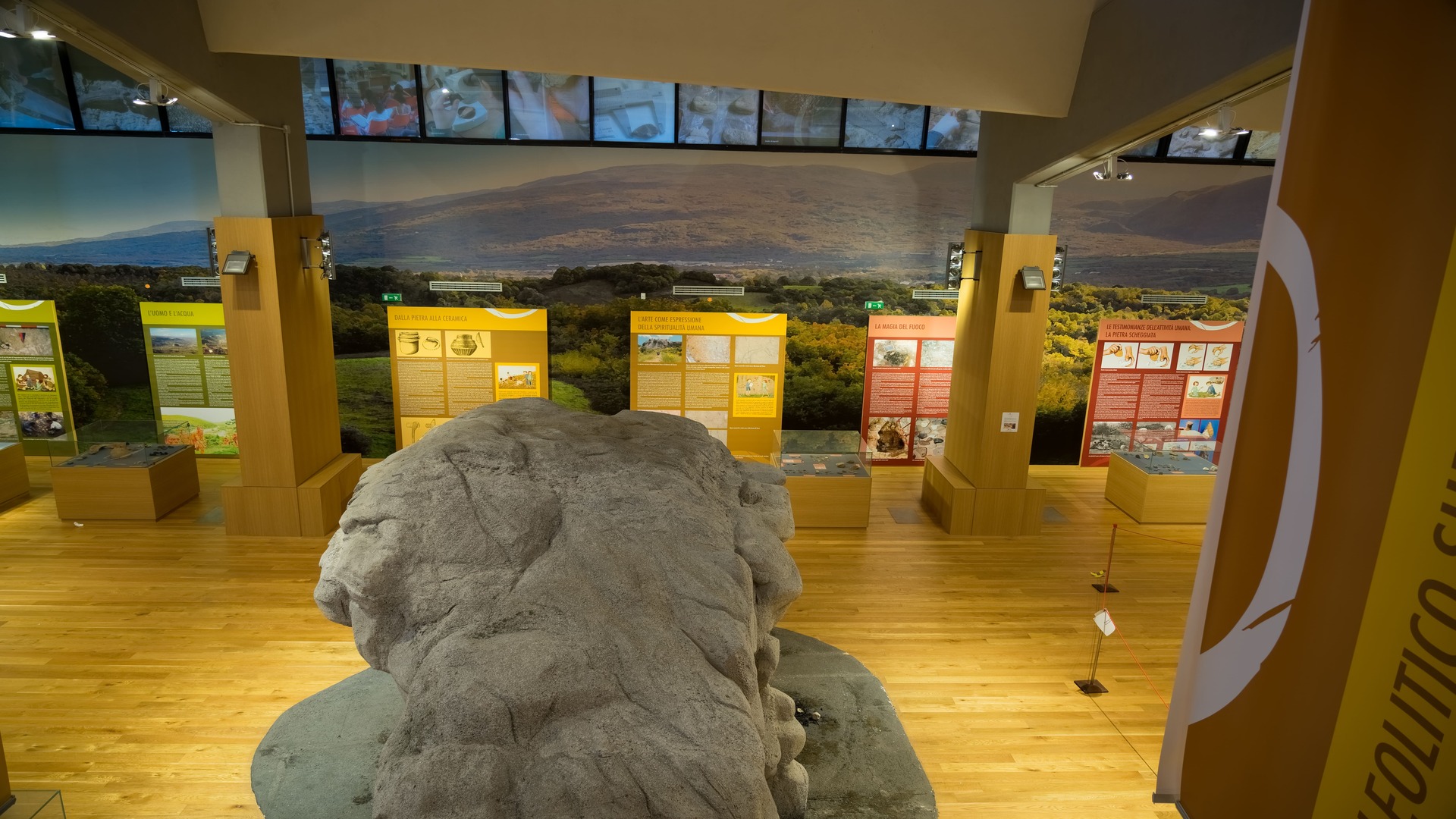The structure is of extraordinary historical interest not only for the fact that it makes usable the Palaeolithic site and all the finds emerged in the archaeological excavations since 1978, but it is a discovery that confirms the first human population of Europe.
The Museum was born around the archaeological area of Isernia La Pineta and is divided into three buildings of about 4,000 square meters joined together by a long external corridor that accompanies the visitor to the visit thanks to a series of large photographs dedicated to all aspects of research, education and enhancement of the site and the museum.
The archaeological area is an integral part of the museum complex thanks to a pavilion of about 700 square meters characterized by two paths placed at different heights: the upper one for visits, the lower one dedicated to researchers who still work today, especially during the summer months, to excavate and study the materials found in the site.
Ample emphasis is given to the finds of "La Pineta" in the exhibition hall dedicated to the site itself, which houses, in its central part, a large open showcase inside which a portion of about 65 square meters of the main archaeological surface has been faithfully reconstructed, with the original finds appropriately restored.
On both levels, showcases and panels complete the itinerary, guiding visitors to the discovery of the excavation techniques of the archaeological site, the documentation, the restoration and the removal of materials. The path is made even more engaging by the presence of multimedia support with audio and video content ranging from interviews with the discoverer to the visual and selective reconstruction of the archaeological site and the finds that make it up. The third room houses three sections and exhibits finds discovered on the territory of Molise that cover a period of time ranging from the Lower Paleolithic to the Upper Paleolithic, from the Neolithic to the Bronze Age. The exhibition is completed by a faithful reproduction of a specimen of Elephas antiquus, large pictorial representations and scenographic reconstructions including a typical Paleolithic hut and one from the Bronze Age.
7 Cultura Arte e Tradizione - MUSEO PALEOLITICO LA PINETA ISERNIA
Back 7 Cultura Arte e Tradizione - MUSEO PALEOLITICO LA PINETA ISERNIA

Virtual tour
Location
Related resources
Cultural Due Mari
This itinerary is educational and entertaining, encouraging regional integration and valuing local culture and the common heritage.
Culture, art and tradition
Culture, art and tradition are often interweaved in an itinerary that crosses the whole region and includes medieval castles, peasant and craft museums, places where popular traditions are carefully preserved.
